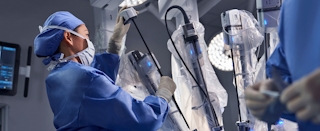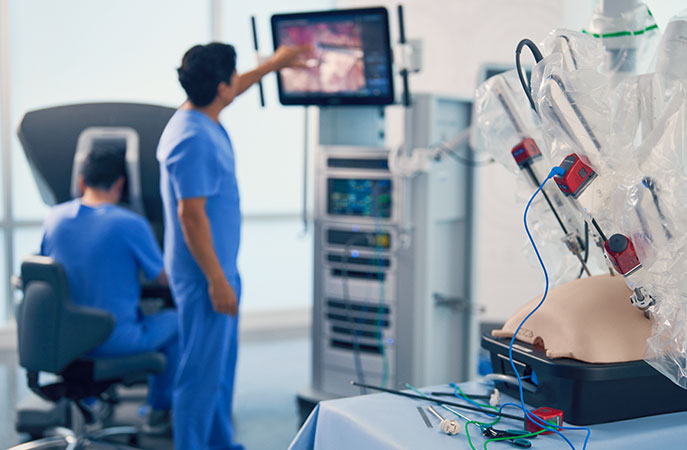

When countries or health systems consider new technology that may help patients, the health technology assessment (HTA) process can provide evidence-based information to help formulate policies that are patient-focused and cost effective.
An HTA is a standard tool when examining new therapeutic or pharmaceutical products, but it can present challenges when evaluating the more complex ecosystem of software and hardware that comprise Intuitive’s da Vinci surgical system.
Recently, Intuitive and global health care consultancy Alira Health convened 14 physicians, economists and policymakers to study 98 HTAs of robotic-assisted systems that had been completed from 25 countries. Its goal was to develop guidance on how HTAs can appropriately assess robotic-assisted surgical systems, such as Intuitive’s da Vinci system. The panel reached clear consensus for healthcare stakeholders considering robotic-assisted surgical systems:
Many HTAs limit their evidence review to randomized control trial (RCT) studies, which are often small and may have limited generalizability when evaluating surgical interventions. Basing HTA decision on RCTs ignores a fast-growing volume of real-world clinical evidence that can inform policy decisions.

When HTAs focus only on hard clinical outcomes, they may overlook such things as the ergonomic benefits for surgeons or certain aspects of patient benefits that could inform health policy decisions.
Evaluating clinical studies in which the surgeons are at different parts in their learning curve or are at different skill levels may bias the interpretation of results.
Some HTAs have allocated the entire capital cost of a robotic-assisted surgical system to the procedure volumes of a single procedure. That approach may skew results; a different way would be to allocate costs across all the procedures that the robotic system addresses. This analysis may more completely reflect how a hospital or health system uses RAS today to cover a variety of patient procedures.

Often HTAs separate analysis of costs and clinical benefit, which can miss the value of RAS to both lower overall costs and help produce improved patient outcomes depending on procedure types. Evaluating the system holistically could more accurately capture all potential benefits.
“This process revealed a better way for HTAs to address robotic-assisted systems going forward,” said Intuitive’s Scott Tackett, vice president of its Global Access Value Economics unit. “HTAs are extremely valuable tools that could become even more potent when modified to consider the unique value of robotic-assisted surgical systems, and we hope our conclusions inform stakeholders around the world.”
Important safety information
Serious complications may occur in any surgery, including surgery with a da Vinci system, up to and including death. Examples of serious or life-threatening complications, which may require prolonged and/or unexpected hospitalization and/or reoperation, include but are not limited to, one or more of the following: injury to tissues/organs, bleeding, infection, and internal scarring that can cause long-lasting dysfunction/pain.
Risks specific to minimally invasive surgery, including surgery with a da Vinci system, include but are not limited to, one or more of the following: temporary pain/nerve injury associated with positioning; a longer operative time, the need to convert to an open approach, or the need for additional or larger incision sites. Converting the procedure could result in a longer operative time, a longer time under anesthesia, and could lead to increased complications. Contraindications applicable to the use of conventional endoscopic instruments also apply to the use of all da Vinci instruments.
For important safety information, including surgical risks and considerations, please also refer to www.intuitive.com/safety. For a product’s intended use and/or indications for use, risks, full cautions, and warnings, please refer to the associated user manual(s).
Individual outcomes may depend on a number of factors—including but not limited to—patient characteristics, disease characteristics, and/or surgeon experience.
Da Vinci Xi/X system
The demonstration of safety and effectiveness for the representative specific procedures did not include evaluation of outcomes related to the treatment of cancer (overall survival, disease-free survival, local recurrence) or treatment of the patient’s underlying disease/condition. Device usage in all surgical procedures should be guided by the clinical judgment of an adequately trained surgeon.